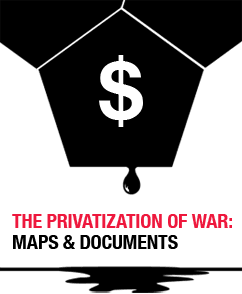Activism in the gallery
For politically-motivated filmmakers Dario Azzellini and Oliver Ressler, Venezuela and its recently instituted democratic socialist government has served as the subject for two projects. In 2004, they made “Venezuela from Below,” a 67-minute documentary in which, according to the film notes, “the true actors in the social process are able to speak.” They interview citizens about their work in creating new models for financial systems, literacy campaigns, and factory work. The latter subject is the primary focus of their most recent project, “Now Time Venezuela: Worker-Controlled Factories.”
Commissioned by the Berkeley Art Museum, the piece is a multiple- screen installation composed of video interviews with workers from with five large companies in various Venezuelan regions: a textile company, an aluminum manufacturer, a tomato-canning factory, a cocoa factory and a paper mill. Each interview reveals the concerns of laborers who face the unique challenges of self-management and/or co- ownership. It’s an engaging, visually handsome piece in which the interviews play simultaneously on projection screens suspended from the at oblique angles, creating a space that envelopes the viewer. The interviews are subtitled in English, and while there are headphones available at each screen, the quietness of the piece exudes a calm dignity.
“The resulting work,” writes exhibition curator Chris Gilbert, “touches upon the themes of ‘social protagonism’ and participation that are key features of the movement that put [Hugo] Chávez's government in power seven years ago and have sustained it through present-day plans for a socialism for the twenty-first century.” Over the coming year, Gilbert plans a series of three projects, by different makers, on Venezuela.
This hardly seems like art material, and indeed the context brings up interesting opportunities for Azzellini and Ressler. “We were very interested in creating a presentation format in which all the projections on the five factories can be seen at the same time,” the Berlin-based team write in a joint e-mail. “A museum provides an audience that is different than the usual audience already interested in this kind of issues. But it also brings people into museums that don’t usually visit museums.”
As this sort of work inherently faces limited distribution venues, they find it particularly appealing that in an installation form, their project will be visible for two months, eight hours a day. “We think that it is important to present left wing political projects in the usually conservative museum context. Such presentations make a contribution to the necessary politicization of the art context. Museums contribute to the separation of art from society and social issues, making it sterile and harmless. We think it’s necessary to link museums to the society again and use them as a space for political and social struggles.” The filmmakers also intend to release their six-screen projection into an 81-minute single-channel DVD, in Spanish, English and German, making it a more easily distributed entity that is scheduled to be available this May for screenings in cinemas, conferences, film festivals, television broadcasts and activist events.
Venezuela from Below, they point out, was presented internationally, in those same venues, more than a thousand times. “It was shown in cinemas in Europe, in film festivals, art exhibits and it was broadcast on three different Venezuelan TV channels and on some local or regional TV stations in Bolivia, the USA and in Denmark. We hope and believe this piece will find a similar audience.”
A well-attended panel discussion was held on the opening day of the Berkeley presentation, and the event demonstrated the powerful nature of the material. Unlike most art events, there was actually heated dialog around the issues, and passionate arguments erupted from an audience of labor activists, Venezuelan ex-patriots, and art administrators and collectors. The mixed group achieves the filmmakers’ intent to make this material accessible. “Without that, the project would be senseless,” they write.
The footage, however, wouldn’t quite function in the museum setting if it didn’t captivate visually. “For us it was of big importance to not have the workers just as protagonists and speakers but at the same time also visualize the production processes in the factories,” Azzellini and Ressler point out. To visualize the production processes also means to take the workers seriously and it’s a tribute to them and their knowledge. In order to shoot that, we opted for long steadycam shots.”
“We also decided to present our interviewees in such a way that they appear actual size in the installation. We hope that might contribute to major sense of identification between the viewers and the interview subjects and the surroundings. We want the viewers to feel immersed into the factory setting.”
According to the filmmakers, Worker-Controlled Factories was partly funded by the Berkeley Art Museum and by German non-governmental foundations with social change as their mission. “It was a totally independent production at each and every stage.”























